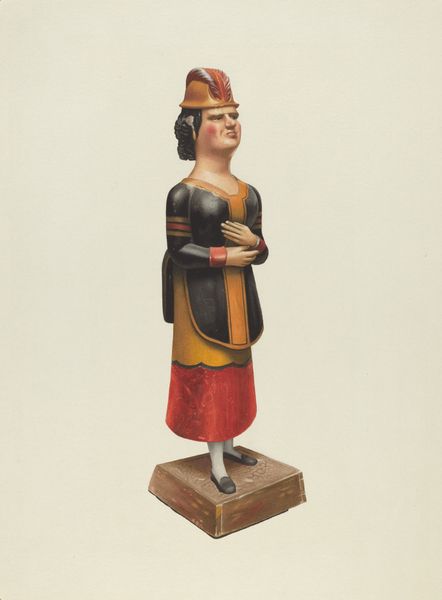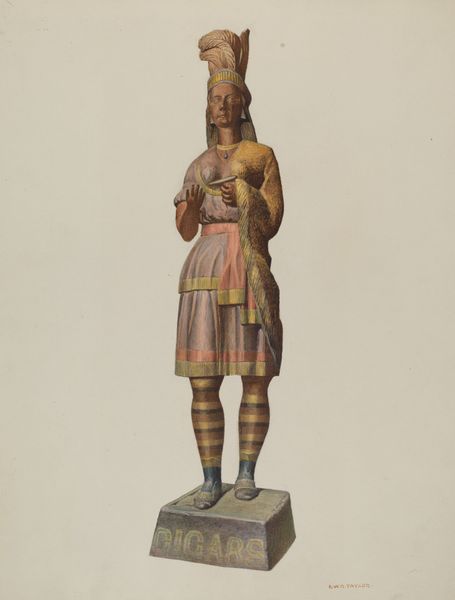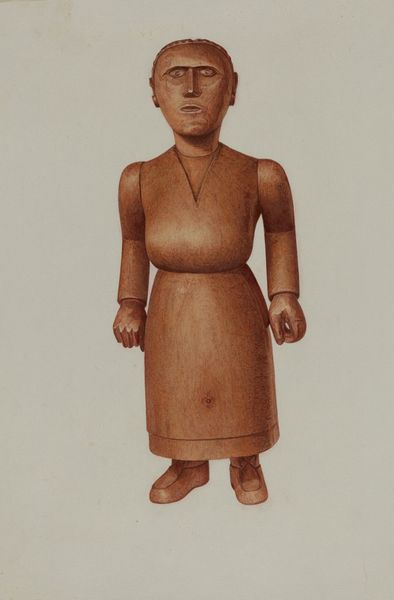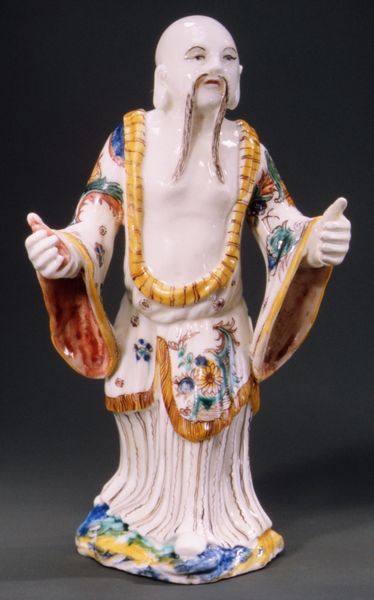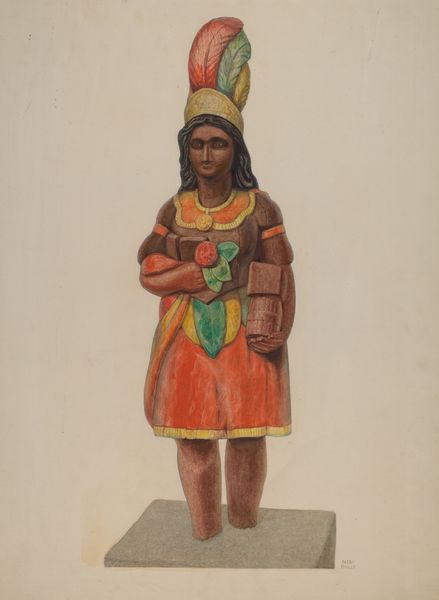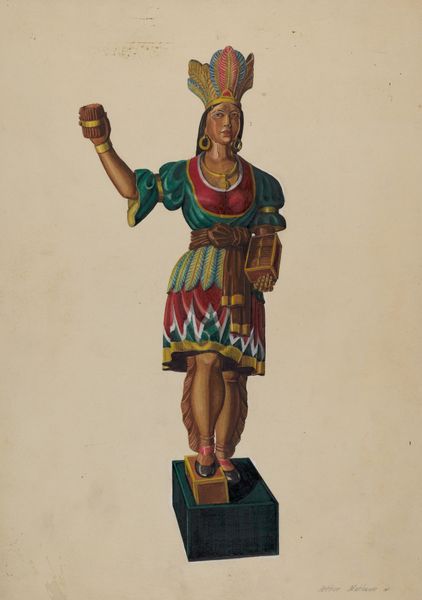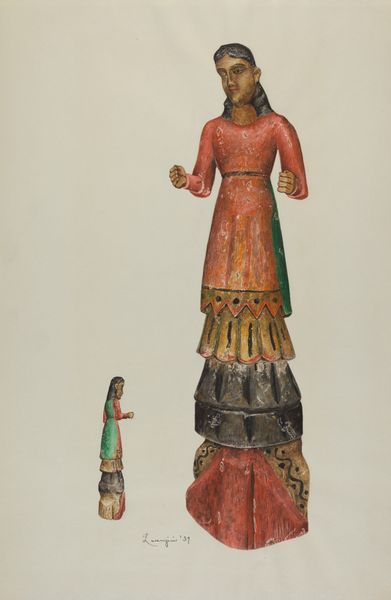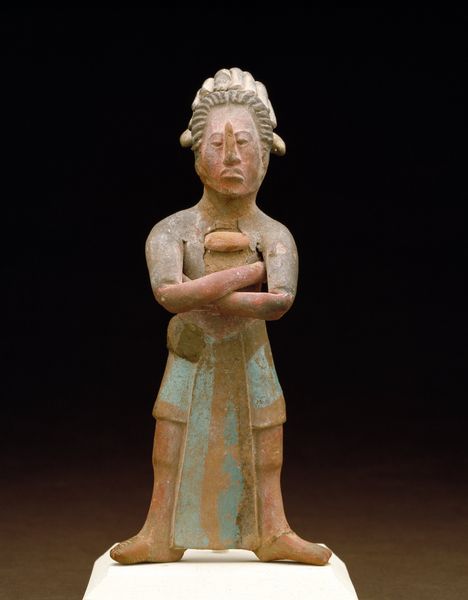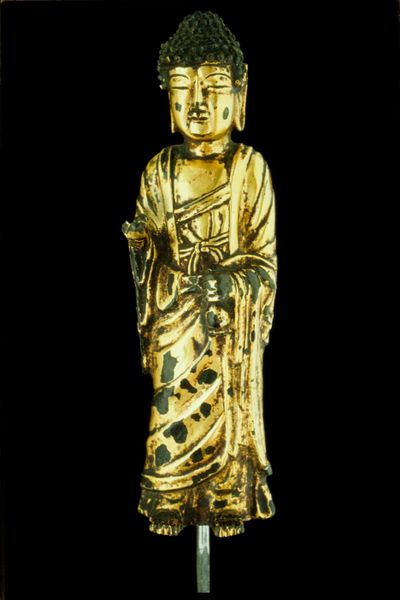
sculpture, marble
#
portrait
#
greek-and-roman-art
#
classical-realism
#
figuration
#
ancient-mediterranean
#
sculpture
#
academic-art
#
marble
#
dress
Copyright: Public domain
Which colour do you most closely associate with Ancient Greek sculpture? 🏛️ For most people, the answer would be white. We’re very used to seeing ancient sculptures, both originals and reproductions, in polished monotones of pure white marble. But did you know, this was not how they would have originally been encountered? This photograph shows a reconstruction of an original Archaic Greek sculpture, the ‘Peplos Kore’ from 530 BC. The sculpture depicts a young woman, usually interpreted to be a goddess, facing forward. ‘Kore’ statues were common in the 5th and 6th centuries BCE; they were used as offerings to deities (gods), and also to mark the graves of young women. A ‘peplos’ was a style of Greek gown consisting of a folded sheet of fabric, usually belted at the waist. The original sculpture was uncovered near a temple in Athens in 1886. It was badly damaged and had been broken into three pieces. The body of the ‘Peplos Kore’ is simple in form, consisting of a simple block shape. Her face, however, is detailed. Her expression is typical of the period – it’s known as an ‘archaic smile’. The discovery of the ‘Peplos Kore’ revealed a fascinating secret. As well as holes in her head and hand, suggesting the original statue would have been decorated with headwear and props, traces of original paint were found on the white marble! 🎨 Originally, this statue – and the majority of other ancient marble sculptures – would have been painted in bright colours. This reconstruction aims to show the sculpture as it would have originally looked, in vibrant shades of red, orange, and green. This knowledge forces the viewer to reconsider their perceptions of ancient art! How would seeing ancient and classical sculptures in full colour change our experiences of them? Is this reconstruction vibrant and lively, or garish? 🌈👇 Editor: Lucy Jude Grantham
Comments
No comments
Be the first to comment and join the conversation on the ultimate creative platform.
